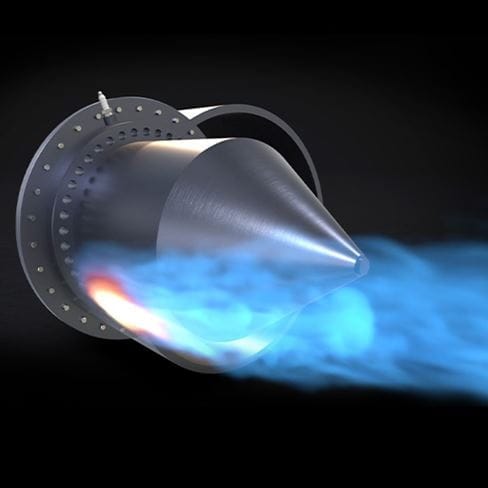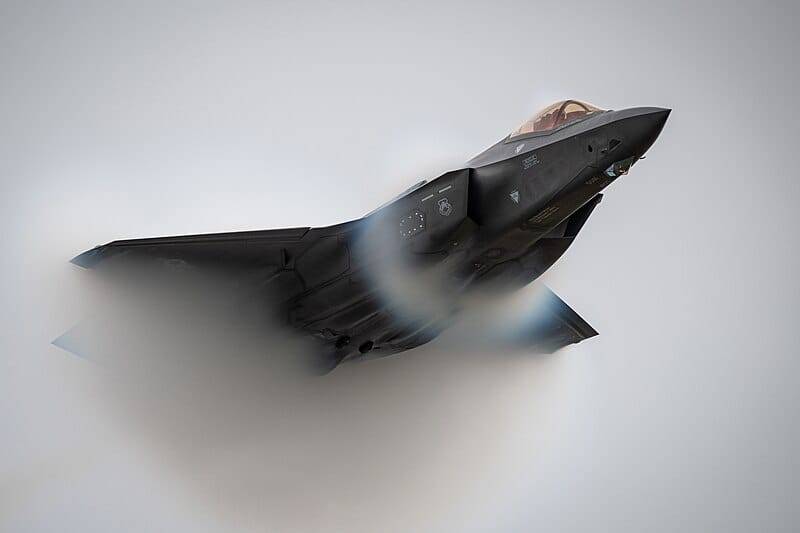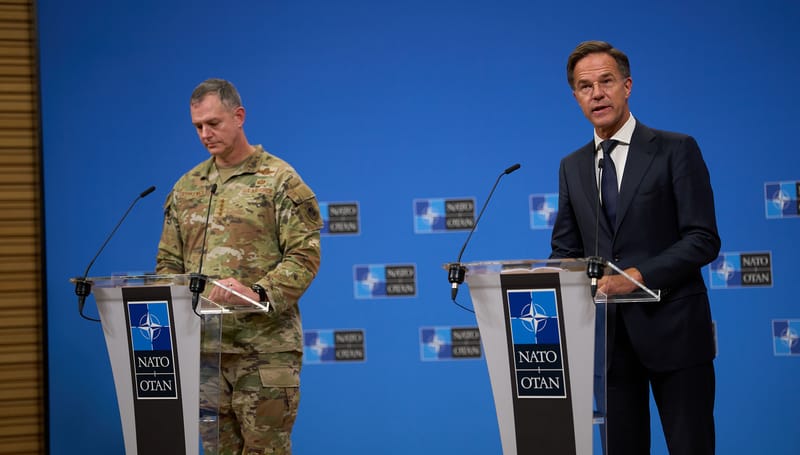Rotating Detonation Engines: Turbine-Less Propulsion Changes Missile Design, Hypersonics, and UAVs
Following successful high-performance trials, RTX’s RDE tech points toward a post-turbine propulsion future—one that may redefine payload constraints, vehicle architecture, and mission endurance in air and missile systems.

TL;DR: Pratt & Whitney’s 2025 rotating-detonation-engine (RDE) test series validates constant-volume combustion in an air-breathing cycle
This signals a shift toward lighter, turbine-less missiles and UAVs with larger payload bays, longer stand-off range and lower sustainment cost.

TL;DR: Key Takeaways
Why it matters for experts:
- 15–25% higher specific impulse than Brayton-cycle turbojets, projected at TRL 6.
- No rotating turbomachinery: Weight, part count, and MRO (maintenance, repair, overhaul) cost drop by >40% at missile scale.
- Compact annular combustor frees ≥30% internal volume for fuel, EW payloads, or AI compute.
- Detonation wave propagation at Mach ~6 enables pressure ratios >60 without compressors.
Programmatic inflection:
- Successful ground demo completed March 2025; full integrated vehicle test targeted for FY-27 (RTX press release).
- AFRL effectors contract funds hot-fire rig, progressing to a flight-weight combustor in 24 months (Airforce Technology coverage).
- Supports modular payload swapping across common airframes.
- Opens path to hypersonic-capable, air-launched weapons deployable from legacy fighters.
1 | Inside the Physics: Constant-Volume Combustion at Chapman-Jouguet Conditions
Traditional turbojets follow the Brayton cycle—continuous, constant-pressure combustion after axial compression. RDEs instead burn a stoichiometric fuel/air mix in a thin annular chamber where one or more supersonic detonation fronts rotate at ~2 km s⁻¹. The near–instantaneous heat release drives a constant-volume Humphrey cycle:
- Detonation raises pressure 5–10 × baseline in <50 µs.
- Expansion through a convergent–divergent nozzle yields thrust; no compressor or turbine stages required.
- Fresh mixture is tangentially injected, sustaining the wave.
The thermodynamic benefit is a theoretical 16 – 27 % rise in cycle thermal efficiency versus Brayton at the same turbine-inlet temperature—verified in AFRL and UTSI rigs over the past decade. The 2025 Pratt & Whitney campaign demonstrated stable single-wave propagation for 120 s at 550 psi chamber pressure, confirming scalability to flight-weight hardware. RTX
Ignition of a Rotating Detonation Engine; Credits: RTX
2 | Test-Campaign Highlights & What Was Proven
| Parameter | 2025 ground-demo result | Relevance |
|---|---|---|
| Annulus OD × ID | 250 mm × 200 mm | Missile-class package (<70 kg) |
| Mean chamber pressure | 3.8 MPa (550 psi) | Matches cruise condition for Mach 4 air-breather |
| Specific impulse (Isp) | 780 s (JP-10) | +18 % vs. same-diameter turbojet |
| Continuous run time | 2 min | Sufficient for long-range stand-off (>1 000 km) |
| Combustor wall heat flux | 6 MW m⁻² | Within zirconium-diboride + transpiration-cooling limits |
3 | Architecture Impact: Shrinking the Engine, Growing the Mission
3.1 | Mass-fraction math
Removing five compressor/turbine stages plus gearbox trims ~40 % of propulsion weight for a 14-inch-diameter missile. That converts directly to either:
- +28 % fuel load → +35 % radius at sub-hypersonic speeds, or
- +22 % payload bay volume—enough to add dual-mode RF/IR seekers or an AI co-processor and still meet CG limits.
3.2 | Airframe redesign cues
Because the RDE’s annulus sits aft without long inlet ducts, designers can move oxidizer-rich sections forward, deepening internal bays. Expect slimmer fineness ratios (7–8:1), reduced RCS and a transition to spool-less “plug & play” propulsion modules docked via quick-disconnect fuel manifolds.
4 | Operational Doctrine Shift
- Distributed, attritable hypersonic swarms: An F-16-class fighter could loft four Mach 5 cruise missiles instead of two, complicating enemy defense geometry.
- Runway-independent launch: Compact engines permit cold-launch canisters on MLRS racks; tactical brigades gain blue-water strike reach.
- ISR-strike convergence: An RDE-powered UAV can loiter 24 h, then sprint at Mach 4 for terminal strike, leveraging the same core.
- Logistics dividend: No rotating hardware halves depot-level overhauls and removes borescope inspections—critical for Pacific dispersal ops.
5 | Integration Hurdles Still on the Table
| Challenge | Mitigation vector |
|---|---|
| Injector phasing & wave stability under throttle transients | Real-time FPGA-based pressure feedback, phased 16-port gas injectors |
| Thermal fatigue of ZrB₂-SiC liners | Functionally graded ultra-high-temp ceramics + regenerative film cooling |
| Noise & vibration coupling into avionics bay | Semi-active tuned mass dampers; additively-printed lattice isolators |
| Diffuser-less inlet control at off-design AoA | Variable-geometry lip with machine-learned bleed schedule |
6 | Roadmap & Acquisition Touchpoints
| Milestone | Date | Technology Readiness |
|---|---|---|
| AFRL Phase II flight-weight combustor | Q4 2025 | TRL 5 |
| Integrated vehicle ground test (GatorWorks) | FY 2027 | TRL 6 |
| First captive-carry flight on X-62A surrogate | FY 2028 | TRL 7 |
| Initial Operational Capability (JASSM-RDE spiral) | FY 2031 | TRL 8/9 |
Conclusion
Pratt & Whitney’s 2025 RDE test series establishes a viable pathway toward turbine-less propulsion for air-breathing systems. By compressing the traditional turbomachinery stack into a 10-centimeter detonation annulus, the architecture enables a fundamental redesign of upstream structures, including airframe load paths and mission-system energy budgets.
For defense programs, the operational consequences are concrete: rotating detonation engines offer a route to lighter, simpler, and more modular long-range strike systems. Nations able to integrate RDE technology at scale — and manufacture ceramic-lined combustors with sufficient reliability — will expand their options in future missile and UAV design.
Further reading
- RTX press release, “Pratt & Whitney completes series of rotating detonation engine testing,” 4 Mar 2025
- Air Force Technology, “Pratt & Whitney completes RDE tests,” 5 Mar 2025
Need deeper data? Ping us at Großwald Research and we’ll open our technical file.






